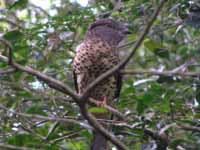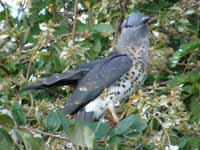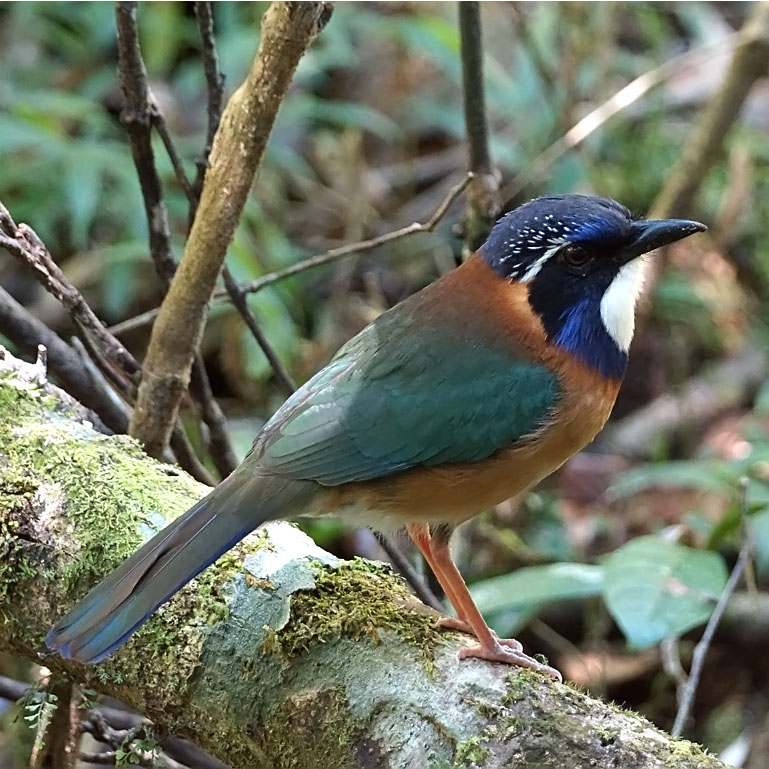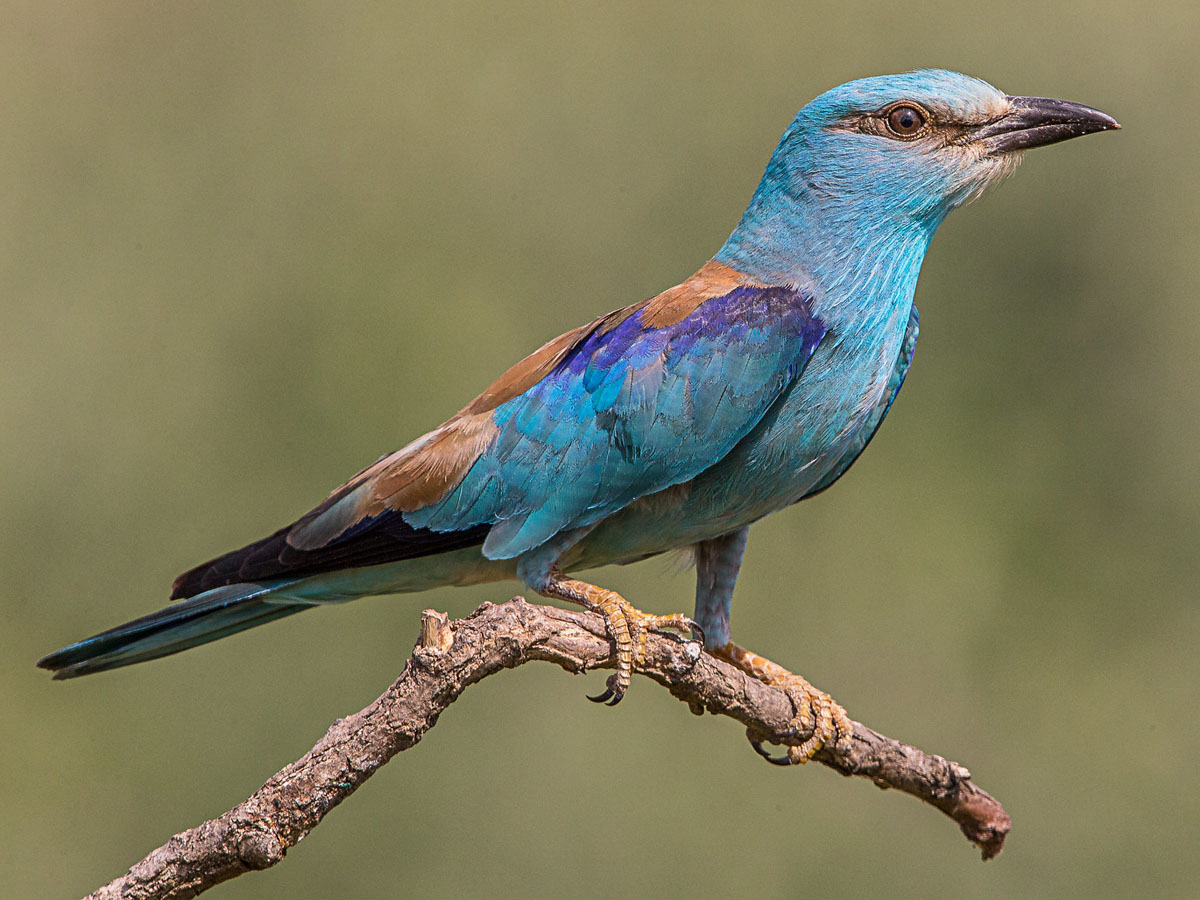The Rollers
The article describes the species of the three roller families: the true rollers of family Coraciidae, the ground-rollers of family Brachypteraciidae, and the cuckcoo-roller which is the sole member of family Leptosomidae. The first two families belong to the Coraciiformes order. The cuckoo-roller family was previously in the Coraciiformes order, but has been recently placed in its own order Leptosomiformes.
The ground-rollers are found primarily on the ground and that is where they capture their prey. The true rollers spot their prey, which are mainly insects, while they are perched in trees. They belong to two genera. Those in Eurystomus usually catch their prey on the wing while those in Coracias usually fly to the ground to catch them. Species of both genera are colorful birds. The rollers of genus Coracias brings to mind kingfishers which are also colorful and fly from tree perches to get their prey; but instead of getting their prey on the ground, kingfishers continue on their trajectory and catch their prey underwater!
The true rollers of family Coraciidae and the ground-rollers of family Brachypteraciidae belong to the Coraciiformes order, as do the bee-eaters of family Meropidae, the kingfishers of family Alcedinidae, the Motmots of family Momotidae, and the todies of family Todidae.
Order Coraciiformes Family Brachypteraciidae
All five of the ground-roller species are only found on Madagascar. In fact, no fossils have been found to indicate ground-rollers were ever found elsewhere. Except for one species, their favorite foods are ants, grasshoppers, beetles, caterpillars, centipedes and similar invertebrates. The scaly ground-roller's main food is worms. The diet of the ground-rollers is similar to that of the true rollers of family Coraciidae, but unlike those more aerial species, the ground-rollers stalk their prey on the ground. This is reflected in their longer legs and shorter, more rounded wings.
Because ground-rollers are rarely seen flying or perched in trees, they are difficult to photograpy or observe. As a result, there are uncertainties about the size of some of their populations and whether they are declining or stable. But the expanding human population in Madagascar has lead to substantial loss of forests and has stressed most of the ground-roller populations. Of the five species, one is listed as Threatened and three as Vulnerable.
The ground-rollers are approximately the same size as the true rollers of family Coraciidae. The smallest species is the rufous-headed ground-roller which has a length of 24 to 27 cm and weight of 73 to 85 grams which is smaller than any of the true rollers. The short-tailed ground-roller is 30 to 38 cm long and weighs 180 to 220 grams which is about the same as the largest true roller.
Like most of the Coraciiformes, ground-rollers are cavity nesters. In this case, the cavities are tunnels that the the ground-rollers excavate in the ground. A rare exception may nest in a tree cavity. The tunnels are created by both partners using their bill and feet. A sandy site with no nearby vegetation is preferred for ease of excavation. The tunnels vary from ,3 to 1.2 meters, the variation due to the species, soil condition, and individual preference. The end of the tunnel is enlarged and may be lined with dry vegetation.
Genus Atelornis
These ground-rollers eat mainly ants, beetles, cockroaches, and beetles which are found on the littered forest floor. They are quite small with a length under 30 cm and weight under 115 grams. These Atelornis ground-rollers are endemic to Madagascar.
Roller,_Pitta-like Ground- Atelornis pittoides
Range: Madagascar.
Habitat: Forests with deep leaf litter and a good amount of dead wood.
Diet: Insects such as ants, beetles, and cockroaches. Also worms and frogs. Forages on the ground by actively searching for prey or standing still and waiting for one to show itself; it then runs and jumps after the prey.
Conservation status: Least Concern.
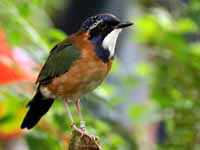
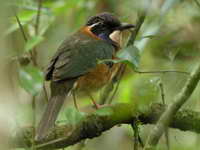

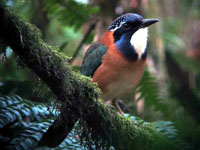
Roller,_Rufous-headed Ground- Atelornis crossleyi
Range: Madagascar.
Habitat: Lowland or high country rainforests which have large trees plus dense thickets, leaf litter, and rotten logs.
Diet: Insects such as ants, beetles, and cockroaches. Also millipedes, moths, snails, bees.
Conservation status: It is listed as Near Threatened due to habitat destruction caused by slash-and-burn agriculture.
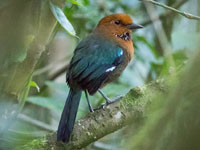
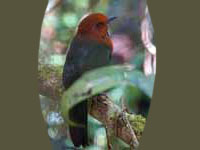
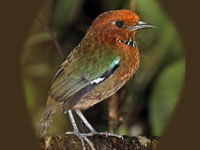
Genus Brachypteracias
Roller,_Scaly Ground- Brachypteracias squamiger
Range: Madagascar.
Habitat: Lowland or medium-high country rainforests which have large trees plus dense thickets, leaf litter, and rotten logs.
Diet: Mainly worms. Also ants, beetles, crickets, caterpillars, centipedes.
Conservation status: The scaly ground-roller is listed as Vulnerable because of its restricted range which is being rapidly cleared.
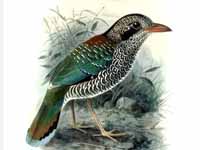
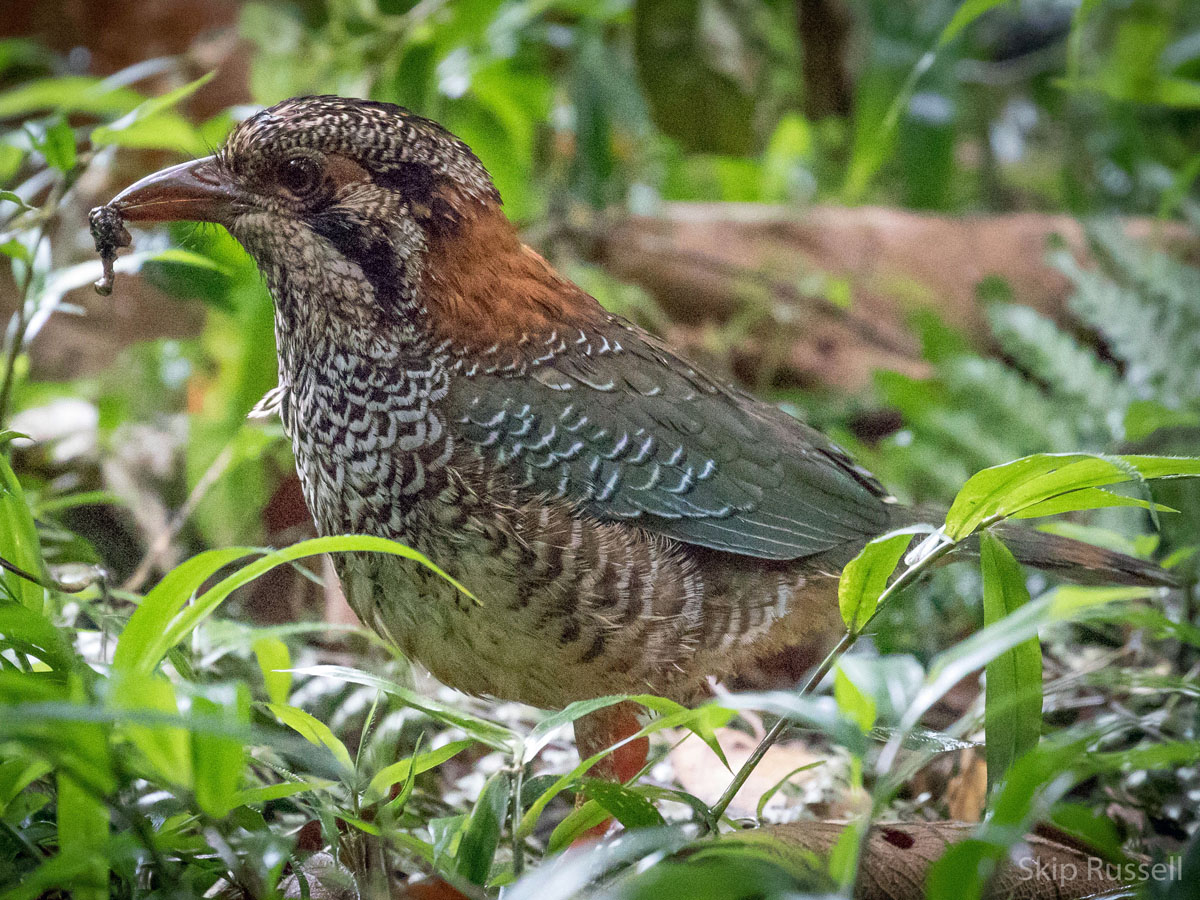
Roller,_Short-legged Ground- Brachypteracias leptosomus
Range: Madagascar.
Habitat: Lowland or medium-high country rainforests which has large trees plus dense thickets, leaf litter and rotten logs.
Diet: Ants, grasshoppers, beetles, caterpillars, centipedes. Also snails, worms.
Conservation status: The short-legged ground-roller is listed as Vulnerable because of habitat destruction.
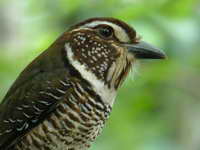
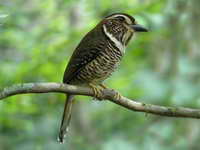
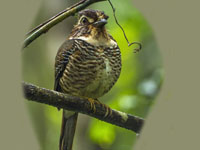
Genus Uratelornis - 1 species
Roller,_Long-tailed Ground- Uratelornis chimaera
Range: near coast of southwest Madagascar.
Habitat: Dry deciduous forests.
Diet: Cockroaches, ants, beetles, caterpillars, grasshoppers, worms. It searches for prey on the ground even by overturning leaf litter.
Conservation status: The long-tailed ground-roller is listed as Vulnerable because of ongoing habitat destruction and a decline in the quality of the remaining habitat.
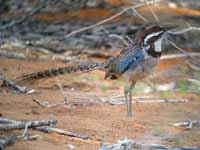
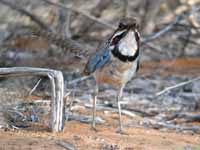
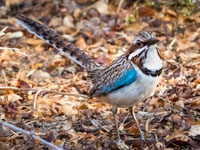
These rollers get their name from the aerial acrobatics some of these birds perform during courtship or territorial flights. They reside in warm climates of the Old World including Australasia. Many of the rollers are colorful birds with blues, pinks, and / or cinnamon browns predominating. The legs are short and they have the two inner front toes connected. They have short necks, long wings, the bill is slightly hooked. Rollers are mainly insect eaters. Some take their prey on the wing while others swoop from a perch down to the ground to grab their prey. The lay 2 to 6 white eggs, incubate for 17 to 20 days, and fledge in about 30 days.
Like most of the Coraciiformes, true rollers are cavity nesters. Instead of excavatiinga tunnel as the ground-rollers do, they instead use existing cavities for their nest. Their first choice is a cavity in a tree, usually dead. The also nest under eaves, in concrete hollows, cavities in cliffs, and some will actually choose to nest in a termite mound cavity.
Genus Coracias
Of the eight species in Coracias, six are found in Africa. They are colorful with blues and browns predominating. Prey included locusts, grasshoppers, beetles, reptiles, and small rodents. They mainly seek prey from perches and capture them on the ground.
Roller,_Abyssinian Coracias abyssinicus
Range: Central Africa.
Habitat: Warm open country with some trees. It has also adapted to farmland and human habitation.
Diet: Large insects, small rodents. Mainly hunts from a perch for prey are on the ground.
Conservation status: Least Concern.
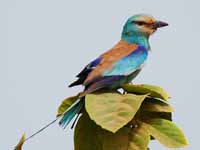
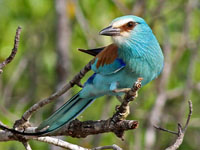
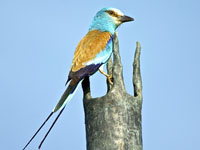
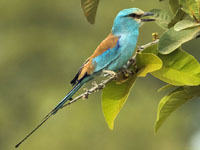
Roller,_Blue-bellied Coracias cyanogaster
Range: Central Africa.
Habitat: Warm open country with some trees.
Diet: Large insects, worms, small snakes. Mainly hunts from a perch for prey on the ground.
Conservation status: Least Concern.
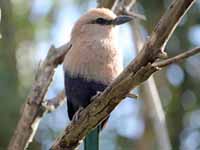
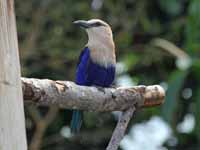
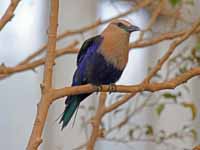
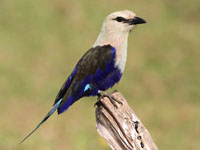
Roller,_European Coracias garrulus
Range: Summers in Europe, Asia, northern Africa. Winters in Sub-Saharan Africa.
Habitat: Open woodlands, grassy areas with trees and or shrubs. Mainly hunts from a perch for prey which are on the ground; also takes some prey on the wing.
Diet: Mainly beetles and other hard-bodied insects; also grasshoppers, termites, centipedes.
Conservation status: Least Concern.
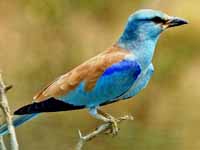
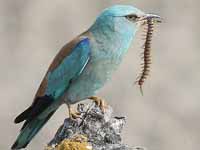
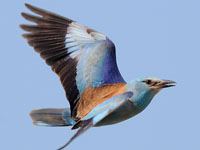
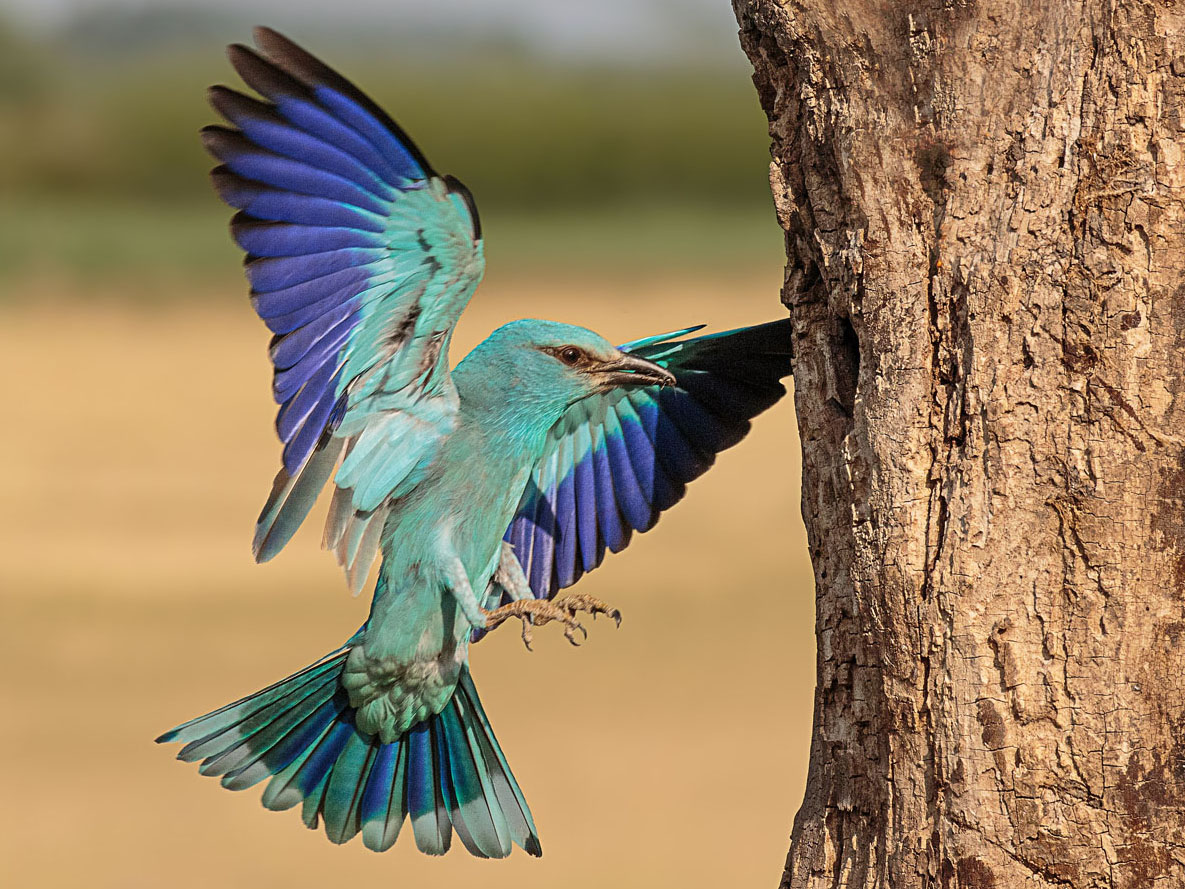
Roller,_Indian Coracias benghalensis
Range: Asia - mainly Indian Subcontinent.
Habitat: Widespread (grassland, plantations, parks, open woods).
Diet: Insects (especially grasshoppers), reptiles, small mammals, Mainly hunts from a perch for prey which are on the ground; sometimes hovers over prey before attacking.
Conservation status: Least Concern.
1) Indochinese Roller C. b. affinis
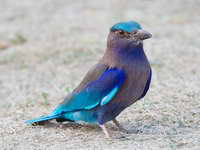
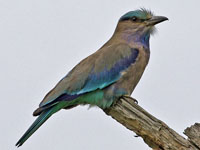
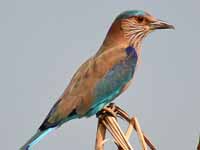
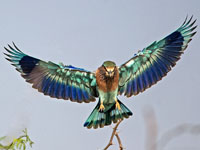
Roller,_Lilac-breasted Coracias caudatus
Range: Eastern and southern Africa.
Habitat: Open savannah habitats with scattered trees and shrubs.
Diet: Insects, spiders, reptiles. Mainly hunts from a perch for prey which are on the ground.
Conservation status: Least Concern.
6) Juvenile
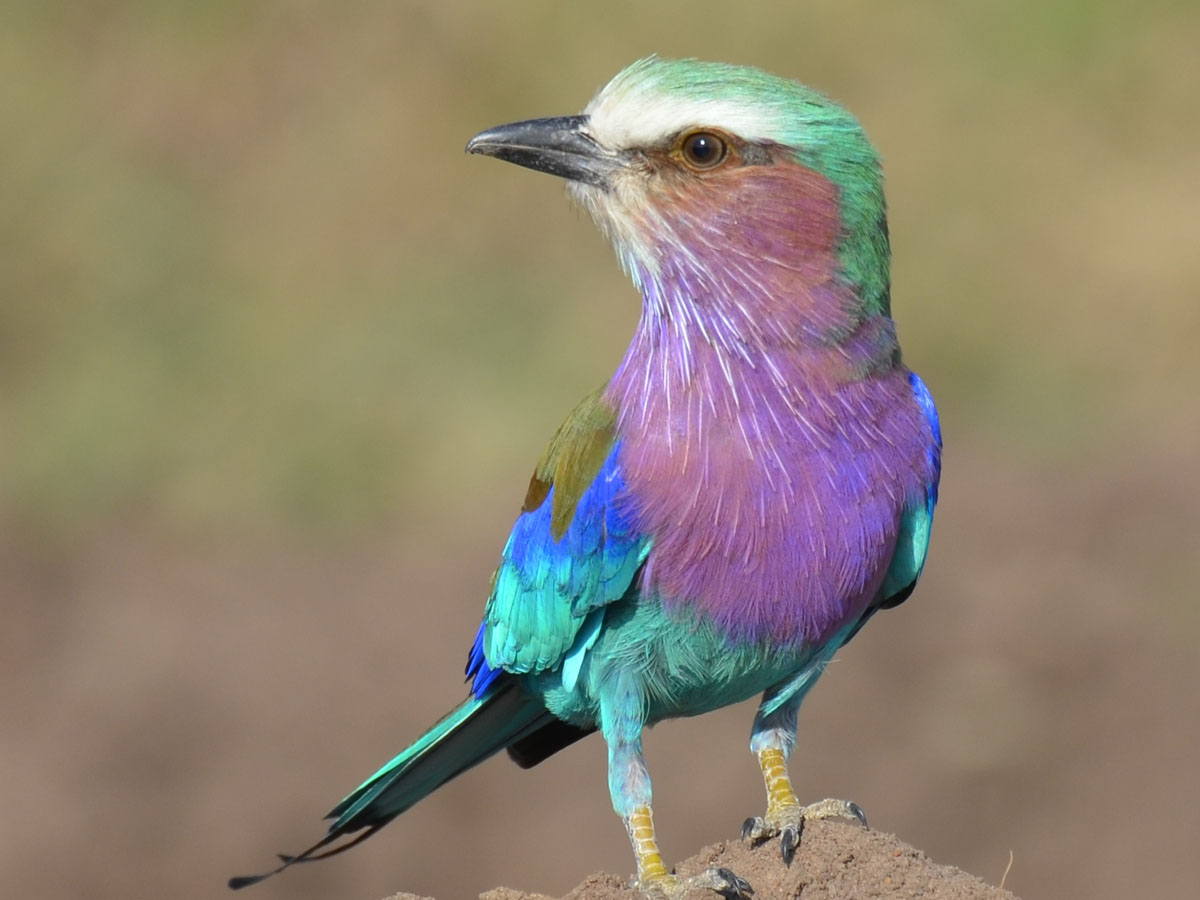

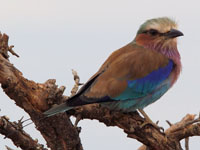

Roller,_Purple-winged Coracias temminckii
Range: Sulawesi (Indonesia).
Habitat: Forests, wooded savana. scrubland.
Diet: Locusts, grasshoppers, beetles, lizards. Mainly hunts from a perch for prey which are on the ground.
Conservation status: Least Concern.
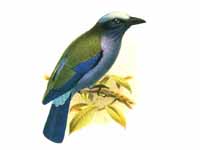

Roller,_Racket-tailed Coracias spatulatus Found: Africa
Range: Southern Africa, but not including South Africa.
Habitat: Woodlands, treed savana.
Diet: Grasshoppers, beetles, insect larvae, scorpions and small lizards. Hunts from a perch for prey on the ground.
Conservation status: Least Concern.
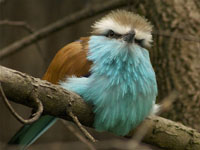


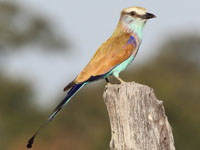
Roller,_Rufous-crowned Coracias naevius
Range: Central and southern Africa.
Habitat: Opne woodlands and treed savana.
Diet: Locusts, grasshoppers, beetles, ants, reptiles, rodents. Hunts from a perch for prey which are on the ground.
Conservation status: Least Concern.
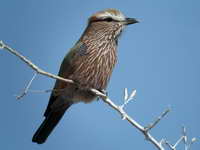
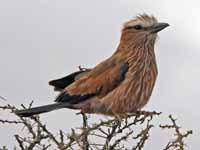
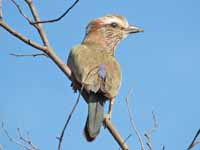
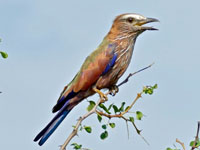
Genus Eurystomus
The Eurystomus vary from the other genus of rollers, Coracias, by having proportionally longer wings and shorter legs. These morphological differences reflect differences in foraging technique. Whereas Coracias rollers forage from a fixed perch and take prey by swooping down onto it on the ground, the faster and more agile Eurystomus rollers catch their prey on the wing. Unlike the Coracias they do not perform the "rolling" display which gives the family its common name.
Dollarbird Eurystomus orientalis
Range: Asia, Australia.
Habitat: Woodland, farmland accompanied with large trees, open country with nearby trees.
Diet: Large insects such as beetles, grasshoppers, crickets. Usually sights prey from a perch and then catches it on the wing.
Conservation status: Least Concern.
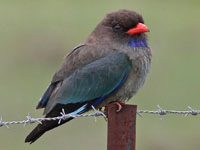
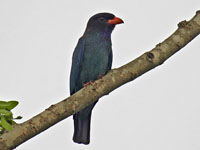
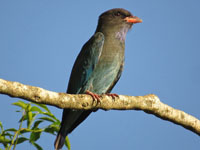
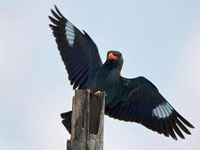
Dollarbird, Azure Eurystomus azureus
Range: Maluku Islands in Indonesia. These islands are east of New Guinea.
Habitat: Forests and lands close to forest edges.
Diet: Insects.
Conservation status: The azure dollarbird is listed as Near Threatened as its population is less than 10,000 and decreasing due to habitat degradation.
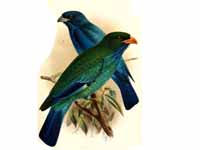
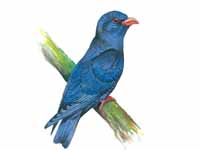
Roller,_Blue-throated Eurystomus gularis
Range: Central Africa.
Habitat: Forests, wooded savanna, farms with large trees.
Diet: Flying insects, insects on ground, centipedes, frogs. Takes prey mostly while in the air, often above the forest canopy.
Conservation status: Least Concern.
1) Probably juvenile
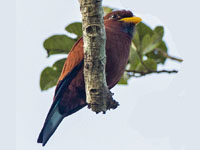
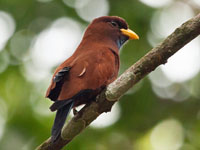
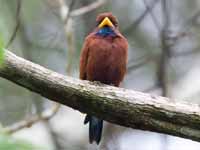
Roller,_Broad-billed Eurystomus glaucurus
Range: Sub-Saharan tropical Africa including Madagascar.
Habitat: Forests, forest clearings, treed grasslands, scrubland.
Diet: Ants, termites, grasshoppers, crickets, bees, flies. Usually perches on a high branch and then catches prey on the wing.
Conservation status: Least Concern.

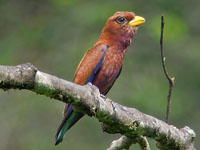
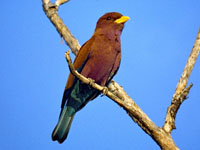
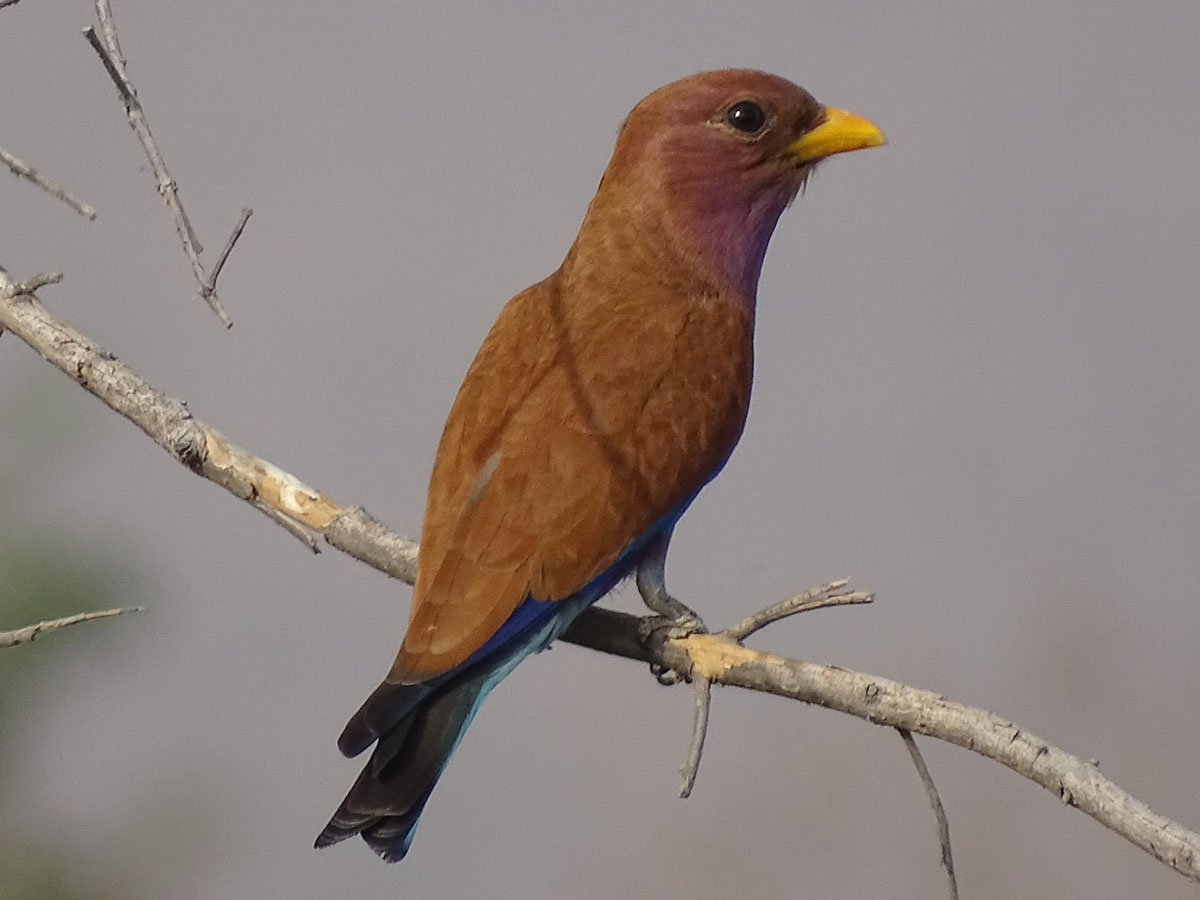
The Leptosomidae family contains just one species, the cucko-roller which belongs to its own order Leptosomiformes. Unlike the true rollers and ground-rollers, the cuckoo-roller sexes have a very different appearance. .
Genus Leptosomus - 1 species
Cuckoo-Roller Leptosomus discolor
Range: Comoro, Madagascar.
Habitat: Forests, tree plantations.
Diet: Mainly insects such as locust, grasshoppers, cockroaches. Also reptiles, carrion. Usually flies from a perch to catch the prey in flight. Also will fly to the ground for prey. It lays about 4 eggs in unlined tree cavities, incubates in 20 days, and fledges in about a month.
Conservation status: Least Concern.
1) Female 2) Juvenile male 3) Male
